Abstract
The effect of application of GA3 on hypocotyl growth, the endogenous GAs, and the metabolism of applied 3H-GA1 were investigated in relation to dwarfism and light-mediated growth inhibition in the normal (tall) strain Violet and the dwarf strain Kidachi of Japanese morning glory (Pharbitis nil). GA3 applied in a wide concentration range (10−9 to 10−3m) to 4-day-old seedlings caused great extension of the hypocotyls in light-grown plants of both the normal and the dwarf strain. However, the dwarf strain did not attain the same length as the normal one at any given GA3 concentration, even when saturation was reached. Dark-grown plants of the dwarf strain responded to GA3, although relatively much less than light-grown ones; dark-grown plants of the normal strain showed no GA3 response at all.
The levels of free GAs in both strains remained more or less constant in both dark- and light-grown plants up to 18 days after germination. The levels of bound GA in dark- as well as light-grown plants of both strains increased after germination, reached a maximum at the 9th day after germination, and then rapidly declined again. The period of increase coincided with rapid elongation of the hypocotyl and the expansion of the cotyledons.
The dwarf strain, Kidachi, contained less endogenous gibberellins, particularly bound gibberellins, than the normal strain, Violet. Dark-grown plants of both strains contained less bound GAs than light-grown plants.
Applied 3H-GA1 was metabolized to the same extent in both dwarfs and normals, on the one hand, and in both dark- and light-grown plants, on the other. This metabolism involved binding as well as breakdown of the 3H-GA1.
Full text
PDF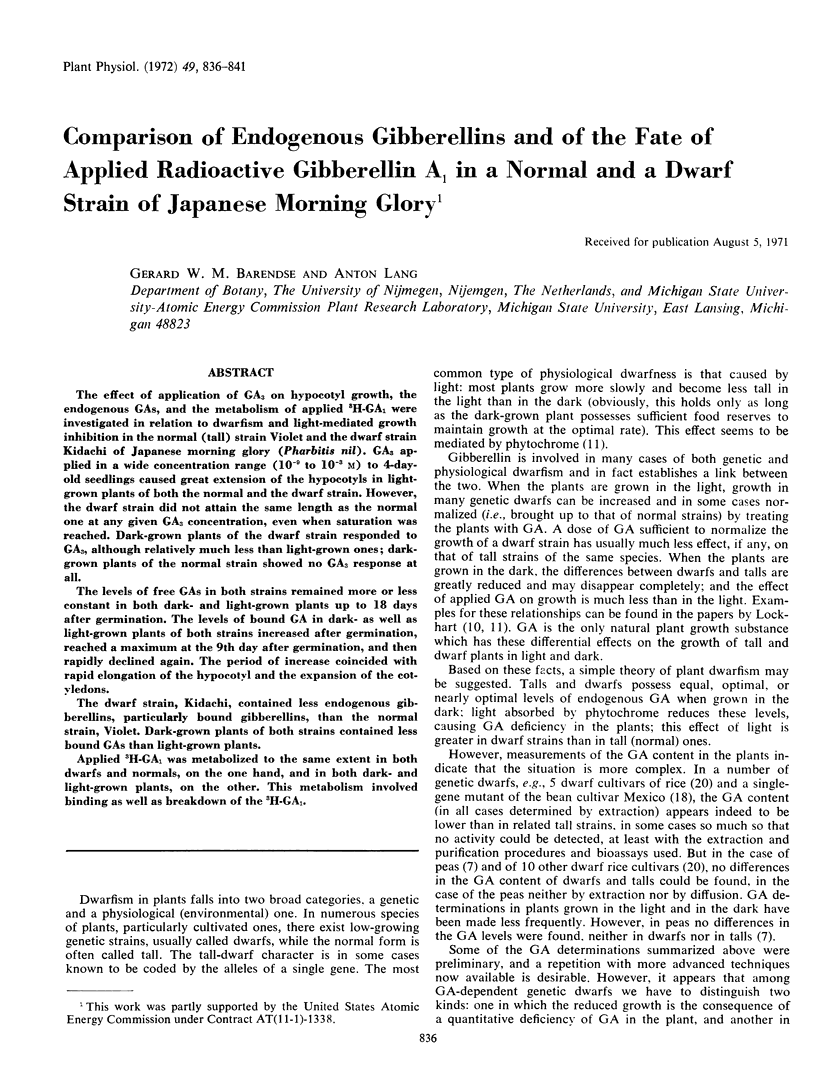
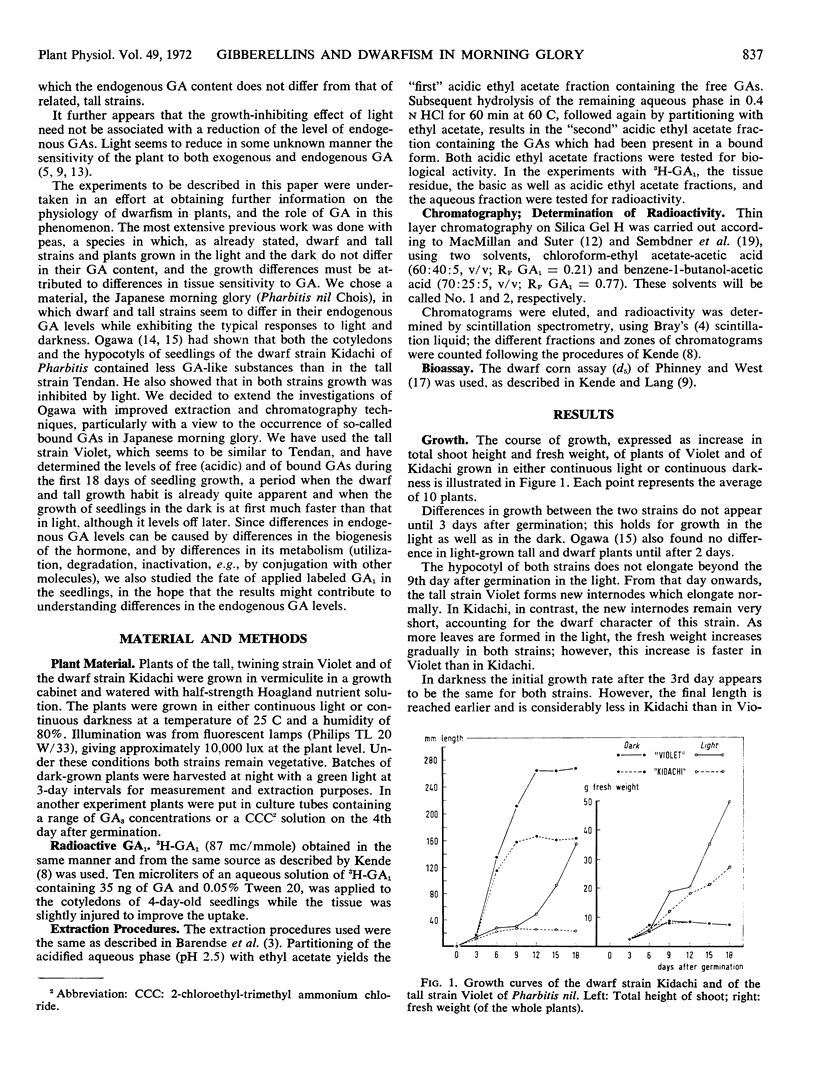
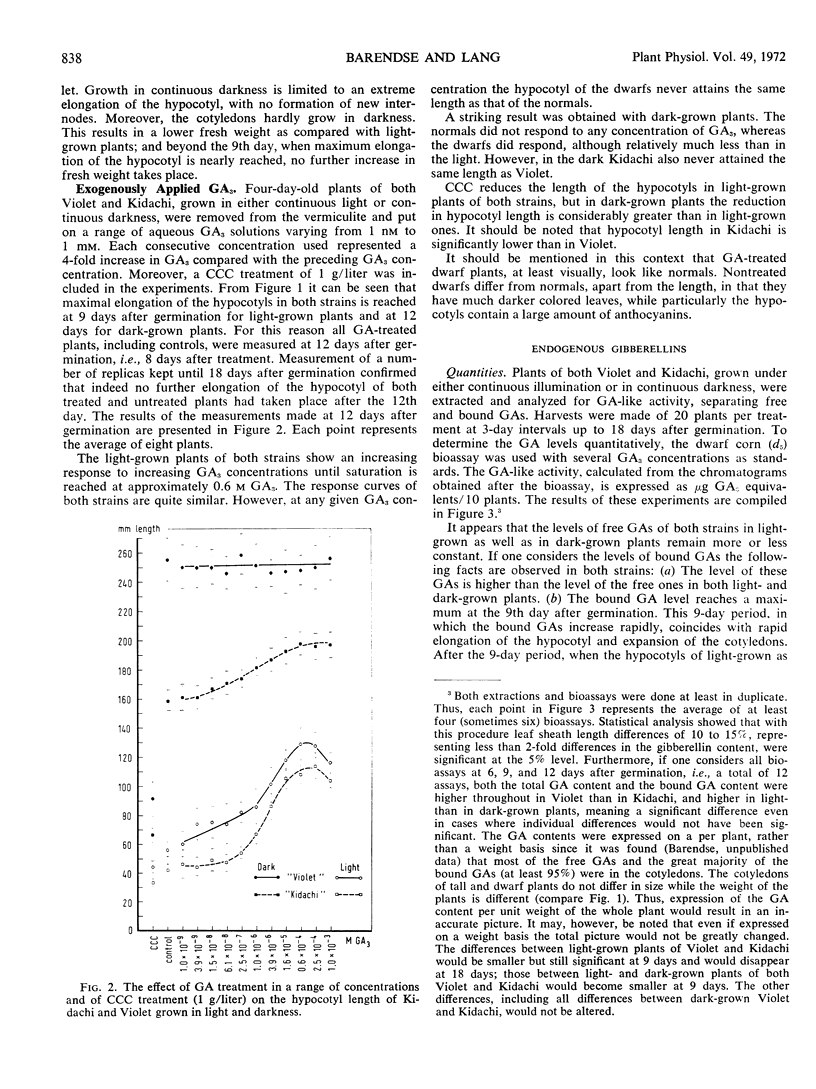
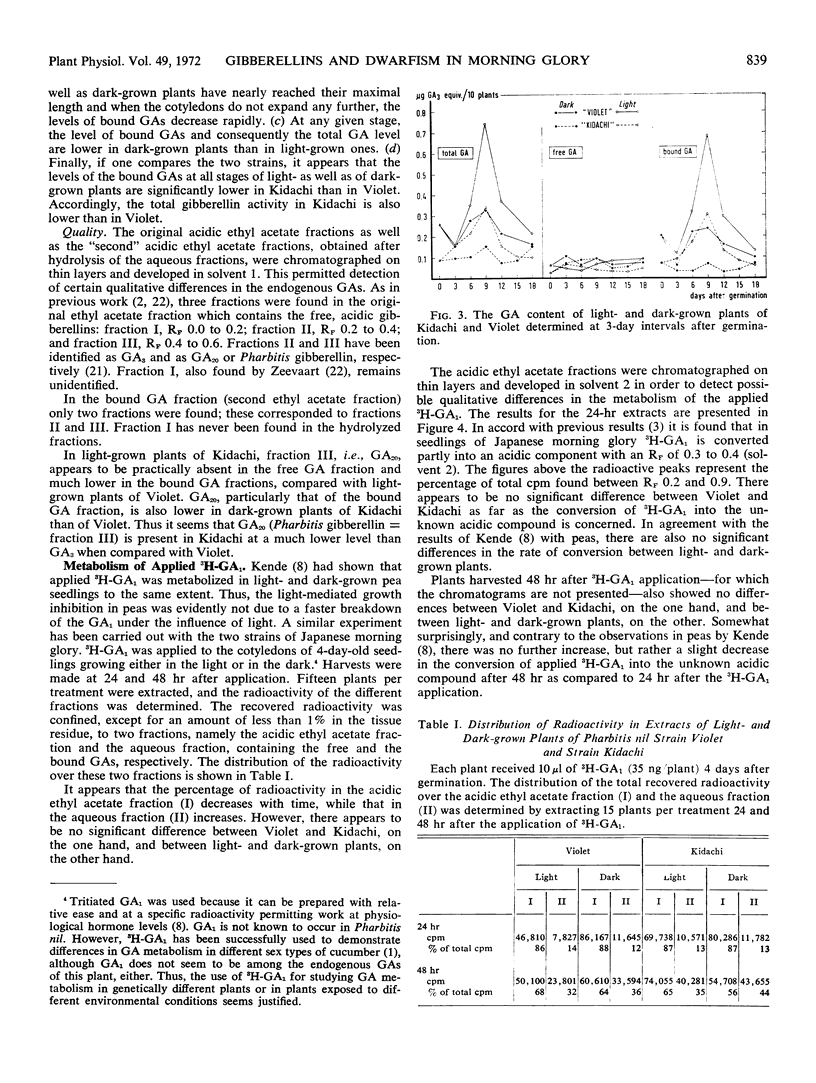
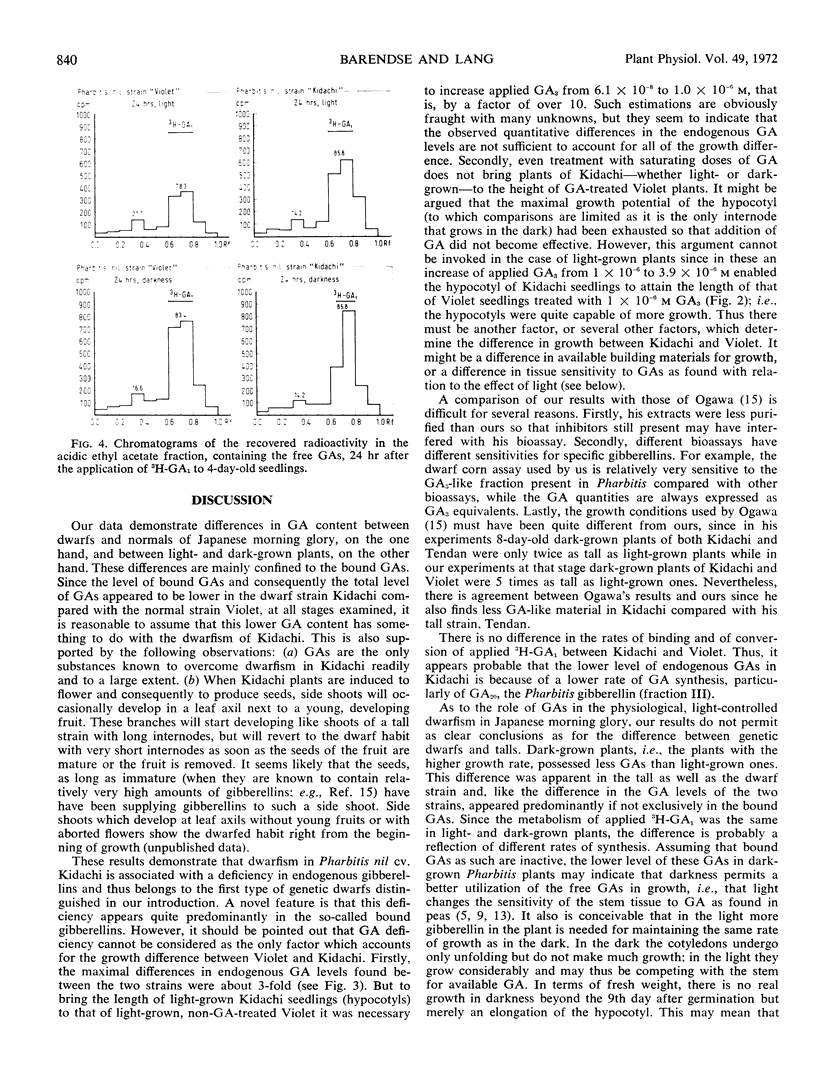
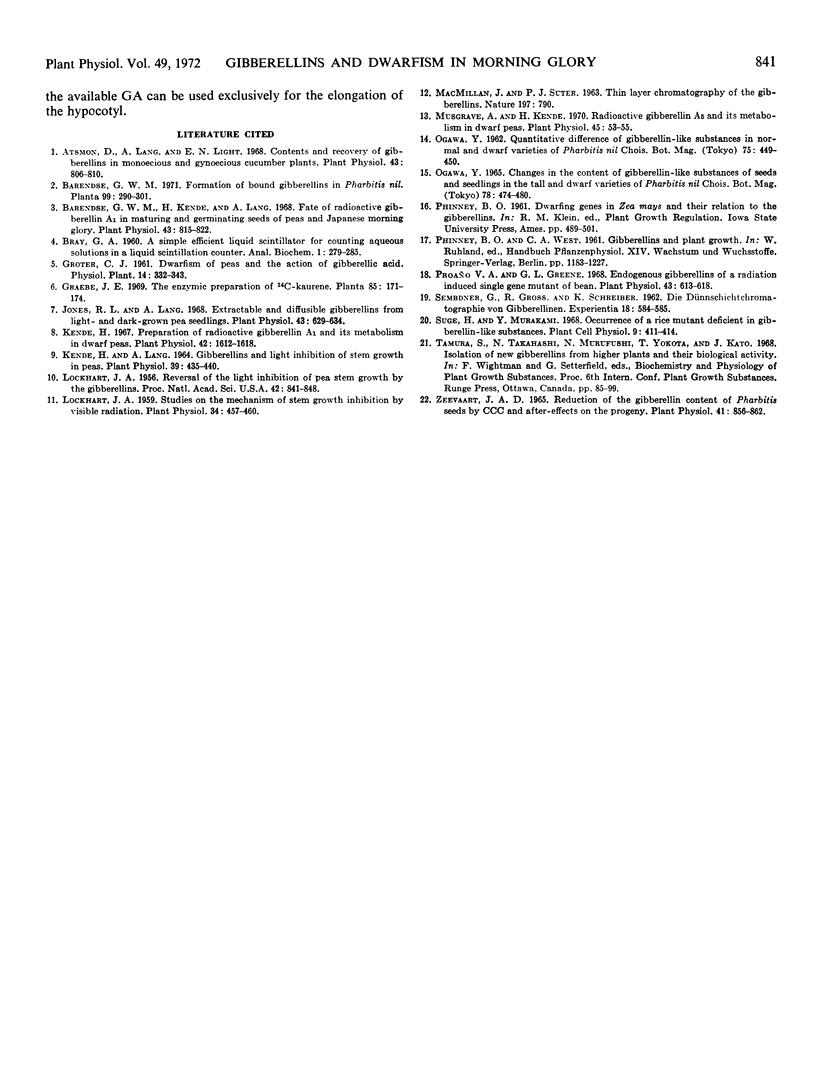
Selected References
These references are in PubMed. This may not be the complete list of references from this article.
- Atsmon D., Lang A., Light E. N. Contents and recovery of gibberellins in monoecious and gynoecious cucumber plants. Plant Physiol. 1968 May;43(5):806–810. doi: 10.1104/pp.43.5.806. [DOI] [PMC free article] [PubMed] [Google Scholar]
- Barendse G. W., Kende H., Lang A. Fate of radioactive gibberellin a(1) in maturing and germinating seeds of peas and Japanese morning glory. Plant Physiol. 1968 May;43(5):815–822. doi: 10.1104/pp.43.5.815. [DOI] [PMC free article] [PubMed] [Google Scholar]
- Barr R., Crane F. L., Peak S. M. Comparative Studies on Plastoquinones: V. Changes in Lipophilic Chloroplast Quinones during Development. Plant Physiol. 1970 Jan;45(1):53–55. doi: 10.1104/pp.45.1.53. [DOI] [PMC free article] [PubMed] [Google Scholar]
- Jones R. L., Lang A. Extractable and Diffusible Gibberellins From Light- and Dark-grown Pea Seedlings. Plant Physiol. 1968 Apr;43(4):629–634. doi: 10.1104/pp.43.4.629. [DOI] [PMC free article] [PubMed] [Google Scholar]
- Kende H., Lang A. Gibberellins and Light Inhibition of Stem Growth in Peas. Plant Physiol. 1964 May;39(3):435–440. doi: 10.1104/pp.39.3.435. [DOI] [PMC free article] [PubMed] [Google Scholar]
- Kende H. Preparation of radioactive gibberellin a(1) and its metabolism in dwarf peas. Plant Physiol. 1967 Nov;42(11):1612–1618. doi: 10.1104/pp.42.11.1612. [DOI] [PMC free article] [PubMed] [Google Scholar]
- Lockhart J. A. REVERSAL OF THE LIGHT INHIBITION OF PEA STEM GROWTH BY THE GIBBERELLINS. Proc Natl Acad Sci U S A. 1956 Nov;42(11):841–848. doi: 10.1073/pnas.42.11.841. [DOI] [PMC free article] [PubMed] [Google Scholar]
- Lockhart J. A. Studies on the Mechanism of Stem Growth Inhibition by Visible Radiation. Plant Physiol. 1959 Jul;34(4):457–460. doi: 10.1104/pp.34.4.457. [DOI] [PMC free article] [PubMed] [Google Scholar]
- Proano V. A., Greene G. L. Endogenous gibberellins of a radiation induced single gene dwarf mutant of bean. Plant Physiol. 1968 Apr;43(4):613–618. doi: 10.1104/pp.43.4.613. [DOI] [PMC free article] [PubMed] [Google Scholar]
- Zeevaart J. A. Reduction of the Gibberellin Content of Pharbitis Seeds by CCC and After-Effects in the Progeny. Plant Physiol. 1966 May;41(5):856–862. doi: 10.1104/pp.41.5.856. [DOI] [PMC free article] [PubMed] [Google Scholar]


